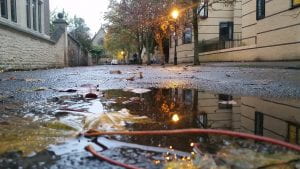Lack of Racial Diversity and its Implications at the University of Oxford
Because there is no affirmative action (or the like) at the University of Oxford, and the fact that the majority of the undergraduate students must be British citizens (the United Kingdom is 87.2% white), the student population is overwhelming white and largely comes from privileged backgrounds. In contrast, approximately sixty percent of University of Oxford graduate students are from outside of Britain, and yet this group consists of mostly students of European descent. For instance, within the nearly 10,200 graduate students at Oxford in 2014, there were about 240 students from Australia and only 50 from Brazil, though Brazil’s population is almost ten times greater than that of Australia. Within the undergraduate community at Oxford, there is much less racial diversity and international representation: out of 11,700 undergraduate students in 2014, a mere 17% were international, including 350 students from China and 50 students from Africa. Because the United Kingdom is much less racially diverse than the United States and the University of Oxford contains less racial diversity than Britain as a nation, it certainly feels vastly different than an institution of significant ethnic and socioeconomic diversity like Amherst College.
At the University of Oxford, I once manually opened a closing door of an academic building and failed to notice a tiny sign on the door that prohibited students from touching the door. To my surprise, a furious white British doorman promptly abandoned his conversation with a visitor to chase me down the hallway, yelling, “There’s a massive sign [saying do not open door],” and then bitterly dismissing me with a snide, “Thank you for listening.” During his patronizing lecture, I held up my student ID and made it clear that I was an Oxford student (as the building did not permit any visitors). Throughout this incident, it appeared that the perhaps doorman was irritated to see an expatriate student taking courses at the University of Oxford (even if he or she was white).
At Oxford, there occasionally exists a strong mentality of “Britain-is-better;” however, most developed countries possess a subconscious belief they are the greatest, and Britons also tend to speak more directly than people from the United States. Many Oxford students readily share their political beliefs and often become immediately enraged when North American students suggest any problems that socialism might cause, as well as being horrified at the prospect of flat taxes.
An African American Rhodes scholar Donald Brown recently wrote of his experience studying at the University of Oxford during the 2014-2015 school year, where his race prompted frequent questions including if he was a construction worker and daily requests from the porters (doormen) to present his ID in order to enter Christ Church, his college at Oxford (as no unannounced visitors are permitted inside the colleges)*. Furthermore, when Brown shared his experience of racial prejudice in a school newspaper, a University of Oxford dean issued a statement:
“We are sorry that some members of the university appear to have felt it inappropriate to be asked to show their university cards … As a newcomer to Christ Church myself, I have also been asked to show my ID on entry on several occasions, and I applaud the thorough and professional approach taken by our porters and custodians. Our staff are drawn from a very wide range of ethnic backgrounds. They do a superb job in welcoming students, visitors, tourists and worshippers from all over the world.”
The dean’s claim defended a nearly thousand-year-old tradition of white nationalism and colonialism at the University of Oxford. The harsh experiences of numerous minority students at Oxford emphasize that like at many universities in the West, racism still exists at an institutionalized level within the University of Oxford.
Although the Christ Church administration later apologized to Brown for their racial insensitivity, the letter of regret was thoroughly half-hearted and avoided taking full responsibility for the board’s actions:
“We … met with Mr Brown on a number of occasions, where he received apologies in person from both the junior censor and the dean. He also received an unequivocal written apology. Although we dispute some of Mr Brown’s claims … we recognise the need to be constantly vigilant in our efforts to identify and eradicate discriminatory practices, including forms of unconscious racism to which Mr Brown refers.”
Because of the United Kingdom and Oxford’s low percentage of non-white citizens and students, it will likely require considerably more time for students of color to feel truly at home in the University of Oxford. Britain never experienced a civil rights movement, and although the United States is still extremely far from post-racism and many US colleges still face serious problems of racial discrimination (including University of Missouri and Yale University last week), I have found the US to be more much more racially accepting than my experience in the United Kingdom.
*Oxford University contains 44 colleges, each of which has its own faculty and facilities (dormitories, dining hall, student center …)






